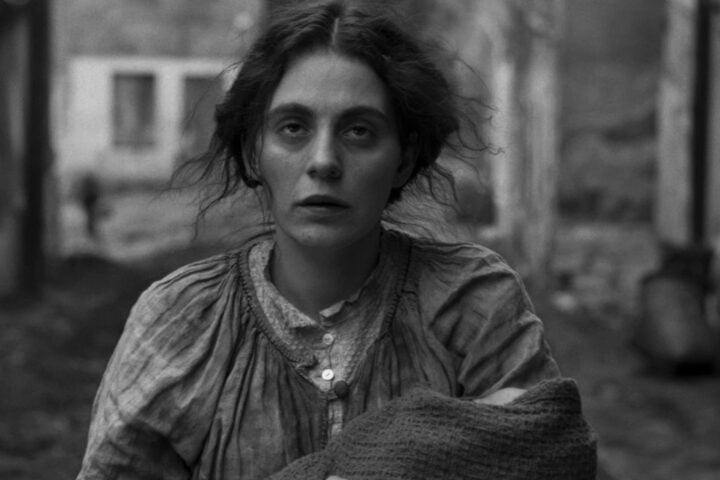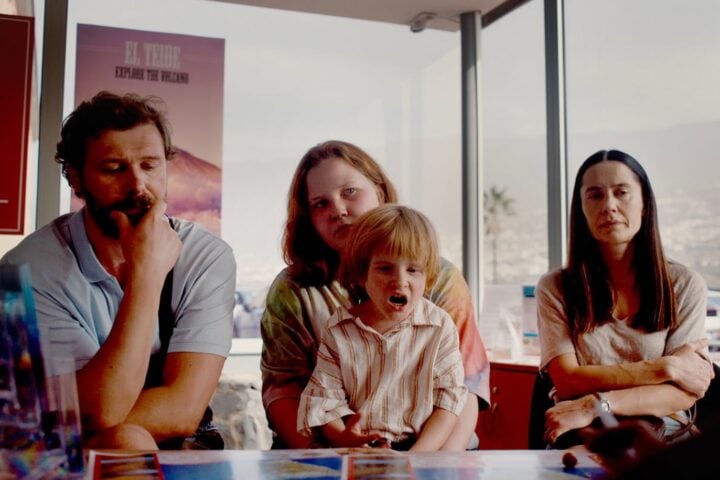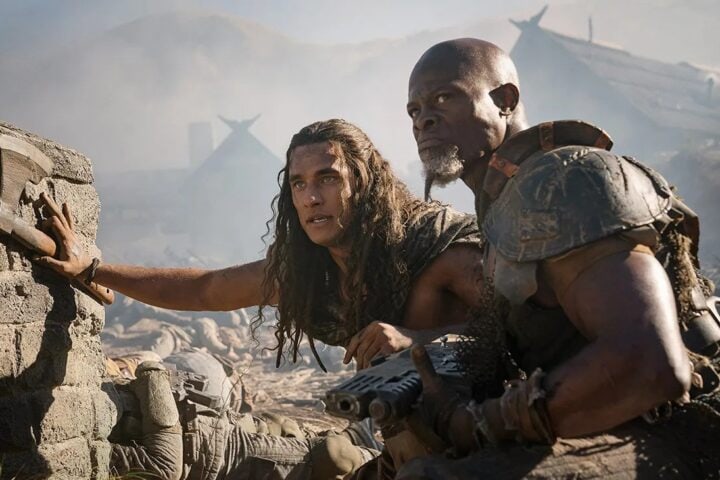Though only three features deep, Hlynur Pálmason’s oeuvre offers hallmarks that are as hard to miss as they are inflexible. His films situate aloof male protagonists within barren, hostile environments, then exhaustively catalogue the processes by which these men unravel and become enigmatic to the point of inscrutability. Along the way, there are spurts of violence, confirmations of the cruelty and indifference of nature, and thinly sketched female figures whose auras of purity fail to avert the lead’s inexorable decline into antisocial behavior.
This narrative game plan was established in an abstracted form in the striking Winter Brothers, honed into something clinical with A White, White Day, and continues apace in Godland, even if this film’s particular circumstances and surprises often hint at something more than foregone conclusions. What keeps Pálmason’s work churning is its formal acumen, which is never more apparent than it is in this tense journey of the soul. The film overflows with knockout imagery and startling edits that redirect otherwise familiar scenarios toward unexpected takeaways.
If the trajectory of his stories feels predictable, Pálmason’s direction almost never does, and that’s certainly the case as Godland transitions from a church in Denmark to the hinterlands of Iceland and finally to a remote village within this island nation. At the center of this expedition is Lucas (Elliott Crosset Hove), a priest assigned to make the arduous trek overseas and build a church for the native people. He’s based on a real historical figure who explored Iceland’s southeast coast through photography, and the inspiration accounts for Godland’s round-edged 4:3 frame and visible film grain, both of which emulate early wet plate photography.
But while Lucas’s penchant for ethnographic picture-taking might suggest that he’s intended as a surrogate for Pálmason, the character’s perspective is never wholly inhabited by the filmmaker’s camera. In fact, Godland’s most compelling passages distance the audience from this chilly outsider in favor of immersion in the elemental landscape that envelops him, as well as the animal lives that offer humbling counterpoint to a variety of human folly.
The film’s first half, redolent of Aguirre, Wrath of God and Meek’s Cutoff, captures the horrible drudgery of a cross-country expedition by foot, wherein the breathtaking beauty of the landscape fails to provide any relief from the physical toil of it all. Godland’s hyper-detailed sound design amplifies every spray of mist and the clomping of feet on muddy ground, creating a sonic landscape that’s so all-encompassing on its own that the eerie wails and moans of the score by Alex Zhang Hungtai (a.k.a. Dirty Beaches) register as portentous italicizing.
Few words are spoken before Lucas’s guide, Ragnar (Ingvar Sigurdsson), provides a haunting campfire monologue about a traveler beset by nightmares of shrieking eels, a story of allegedly unknown provenance that’s increasingly inflected with personal gravitas by the teller. What’s exposed by the tale is a creeping fear—of the unknown, of nature, and of femininity—that seems to imbue Ragnar and Lucas, whose mission is one of colonialist arrogance.
Just before the long takes of figures trudging through landscapes start to wear out their welcome, a remarkable 360-degree tracking shot near Godland’s midway point precipitates a sudden ellipsis in the story. With Lucas’s fate uncertain due to fatigue and illness, Pálmason plunges his camera into the elements—first a volcanic eruption, then the churning seas—before emerging to introduce a trio of new characters: Ida (Ída Mekkín Hlynsdóttir) and Anna (Vic Carmen Sonne), the two daughters of a Danish patriarch, Carl (Jacob Lohmann).
Ida and Anna live in a modest coastal cabin with their father, and it becomes apparent before long that this small family unit has taken in Lucas and Ragnar as guests, though the momentary narrative disorientation accomplishes more than just a nifty way of cutting to the chase. Now thrust back into civilization and reoriented to their assignment, Lucas and Ragnar appear as though profoundly rattled, their professional partnership now edging into a nebulous, unspoken rivalry that’s overseen and even egged on by Carl and his daughters.
Pálmason’s unifying theme is the egocentrism and inevitable violence of masculinity, which is linked in Godland to colonizing efforts and the blinkered rendering of history that results from it via Lucas’s photographs. It’s well-covered terrain, but instead of merely elucidating this thesis as he did in A White, White Day, Pálmason undercuts the preordained spiral of one flawed male protagonist with the confrontations of forces greater than himself—in this case, Iceland’s forbidding vistas and a community of real people who challenge Lucas’s smugly held assumptions about faith and morality—and the repercussions of his actions on others.
To this end, Carl’s youngest daughter, Ida, shaken up in ways she can’t yet fully comprehend by Lucas’s stopover in her dead-end town, provides the emotional core of Godland. An unexpected reaction shot of Hlynsdóttir’s impressionable face during a moment of macho one-upmanship hints at a more self-effacing direction for Pálmason’s cinema to take, one in which the austere masculinity-in-crisis yarns that he’s apparently compelled to repeat are, however gorgeously mounted, permitted to entertain counterintuitive and conflicting emotions.
Since 2001, we've brought you uncompromising, candid takes on the world of film, music, television, video games, theater, and more. Independently owned and operated publications like Slant have been hit hard in recent years, but we’re committed to keeping our content free and accessible—meaning no paywalls or fees.
If you like what we do, please consider subscribing to our Patreon or making a donation.





